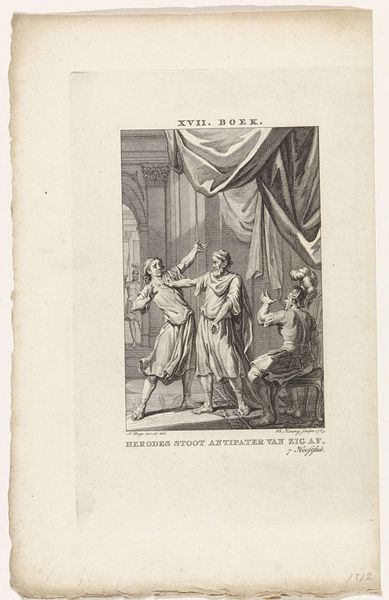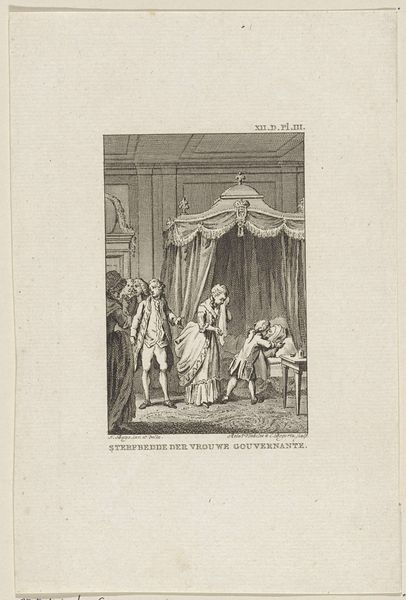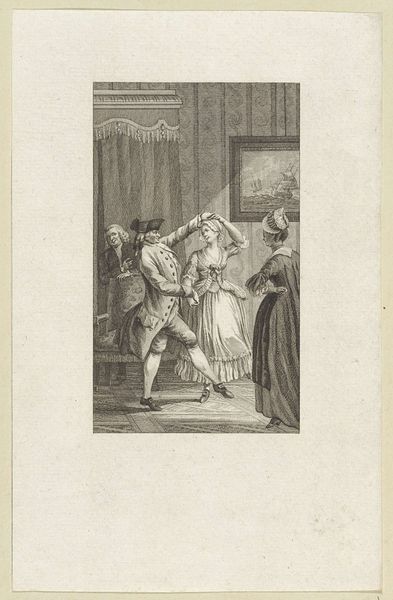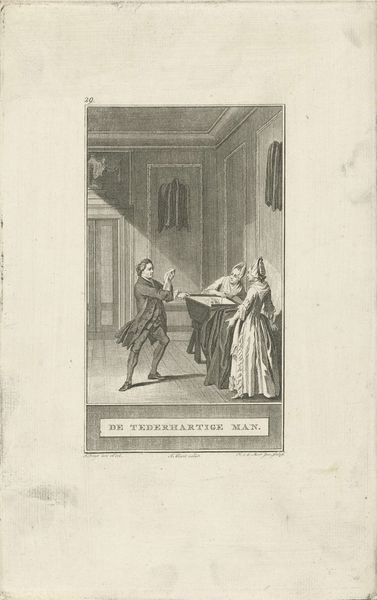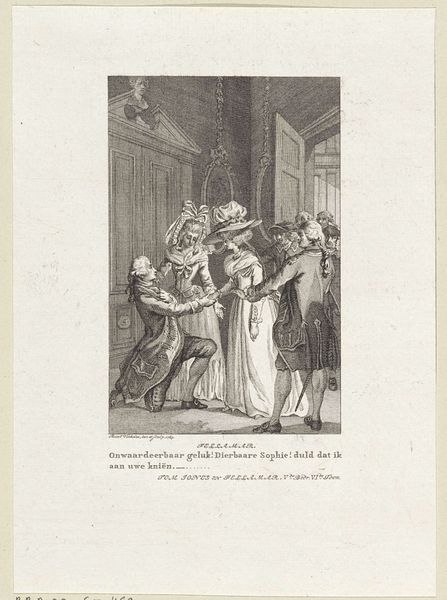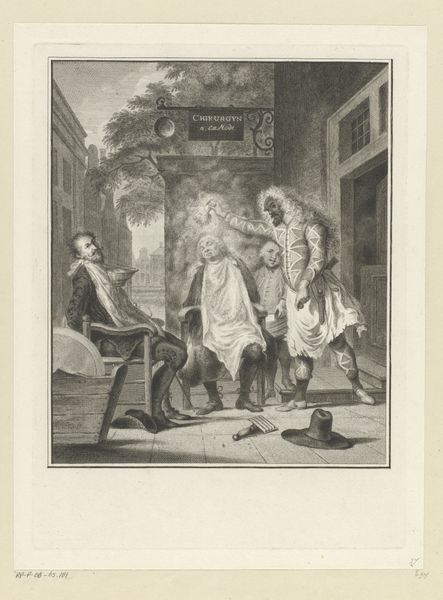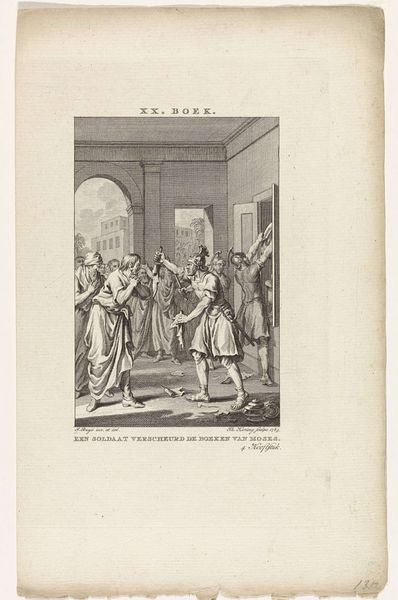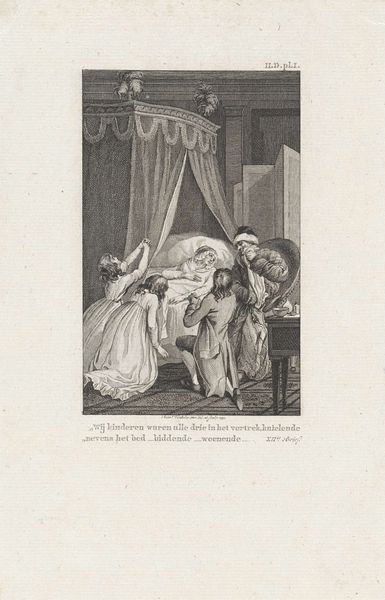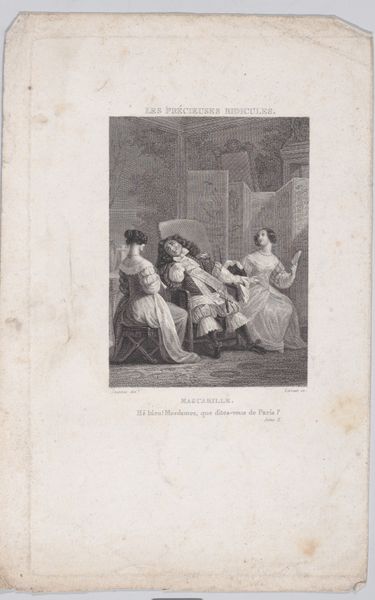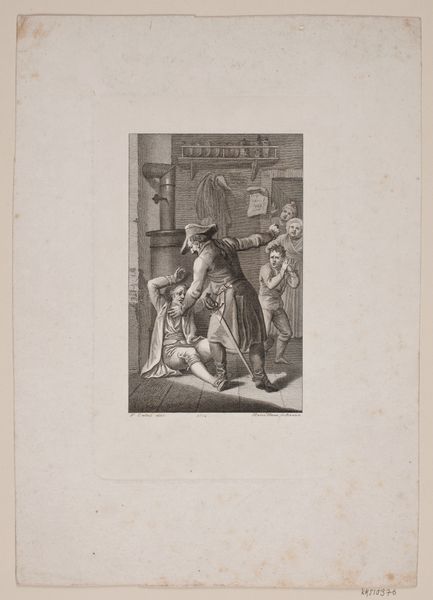
Dimensions: height 233 mm, width 151 mm
Copyright: Rijks Museum: Open Domain
Editor: This is Theodoor Koning's "Veroordeling van Haman," an engraving from 1780 at the Rijksmuseum. I'm struck by the drama captured in such a simple medium. The figures are so expressive. What do you see in this piece beyond the surface narrative? Curator: I see a reflection of power dynamics and social justice. While ostensibly illustrating a biblical tale, this print speaks to the societal hierarchies and anxieties of 18th-century Netherlands. Note the architectural background. Does this scene remind you of similar impositions of justice in our history? Editor: I hadn't considered the connection between the setting and broader power structures. Now that you mention it, that grand room contrasts sharply with the beggar-like posture of the man kneeling. Curator: Exactly! And the gaze. Where is each figure directing their attention? Think about who is centered, both literally in the composition and metaphorically within the social order. Consider too who is absent, in this instance. The Jewish Queen Esther. Editor: So it’s not just about the condemnation of Haman, but also about visually reinforcing existing social orders? By showcasing power dynamics. I had not thought about this beyond the immediate narrative from the bible. Curator: Precisely! And those visual cues become potent tools for understanding the assumptions and biases embedded within the artwork's historical context. What do you make of that? Editor: It completely reframes the artwork for me. It makes me consider how seemingly straightforward historical depictions can actually be loaded with social commentary. Curator: I hope you walk away empowered to unpack similar messages in other artworks. What begins as passive appreciation can become active engagement with culture, politics and ethics.
Comments
No comments
Be the first to comment and join the conversation on the ultimate creative platform.
